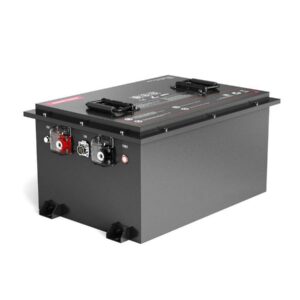
Can a diesel truck run without a battery?
Diesel trucks require a battery for starting but can theoretically run without it once the engine is operational. Unlike gasoline engines needing spark plugs, diesel engines rely on compression ignition. However, removing the battery while running risks voltage instability since alternators depend on battery buffering. Modern trucks with electronic controls will likely stall or sustain damage without a stable power source.
Why do diesel engines need a battery initially?
Diesel engines require battery power to crank the starter motor, which compresses air for ignition. Glow plugs in cold climates also drain battery capacity to preheat combustion chambers. Without sufficient cranking amps, compression temperatures won’t reach diesel’s autoignition point (~210°C).

During startup, the battery delivers 200–800 amps to the starter motor, overcoming engine compression resistance. Pro Tip: Weak batteries cause incomplete compression, leading to misfires. For example, a 6.7L Power Stroke needs 12V @ 750 CCA—below 500 CCA, cranking speed drops, delaying ignition. Transitionally, once running, the alternator takes over, but abrupt battery disconnection can spike voltage to 18V+, frying ECUs.
Can mechanical diesel engines run battery-free?
Pre-1980s mechanical diesels with manual starts or compression releases might operate sans battery. These lack ECUs, using mechanical fuel injection and governors. However, sustaining operation requires alternator excitation—often battery-dependent.
Mechanical systems like Cummins N14 use alternators self-excited via residual magnetism, but only if RPM exceeds 1,200. Practically, without a battery, the alternator can’t maintain stable voltage at idle. For instance, a 1985 Mack R686 idling at 600 RPM would experience flickering lights and eventual stalling. Transitionally, some retrofit with permanent magnet alternators, but these are niche solutions.
| System | Battery Dependency | Risk Level |
|---|---|---|
| Mechanical Diesel | Low (post-start) | Moderate |
| Electronic Diesel | High | Severe |
What happens if you remove the battery while running?
Disconnecting the battery mid-operation disrupts the vehicle’s electrical loop, causing alternators to surge. Voltage can spike to 18–30V, overwhelming sensitive electronics like ABS or transmission controllers.
Modern trucks use battery as a capacitor to smooth voltage. Without it, the alternator’s output becomes erratic—imagine removing a dam’s spillway during a flood. For example, a 2020 Freightliner Cascadia’s ECU expects 13.5–14.8V; spikes beyond 16V trigger protective shutdowns. Transitionally, even if components survive, irregular power corrupts memory modules, requiring dealer resets.
Battery Expert Insight
While diesel engines don’t require spark ignition, their electrical systems depend on batteries for stability. Modern trucks integrate batteries into the charging circuit—removing them risks voltage spikes exceeding 150% of nominal. Always maintain battery health; a failing unit can mimic electrical faults, complicating diagnostics.
FAQs
Can you jumpstart a diesel truck without a battery?
No—jumpstarting requires a donor battery to power the starter and glow plugs. Dead batteries lack the capacitance needed for stable voltage during cranking.
How long can a diesel truck run without an alternator?
Approximately 30–90 minutes, depending on battery capacity. A 800Ah AGM battery powering headlights and ECU may last 75 minutes before voltage drops below 9V, stalling the engine.
What Is the Best Battery for a Diesel Pickup Truck?
Can a diesel truck run without a battery?
Yes, some older diesel trucks with purely mechanical injection systems can run without a battery once started, as they don’t rely on electronics. Modern diesels, however, require a minimum voltage to power fuel injectors and the engine computer, making a battery essential for starting and reliable operation.
Can you start a diesel engine without a battery?
Non-electronic diesels can be started using alternative methods like air starters, spring starters, or push starts for manual transmissions. Modern electronic diesels, however, need at least some battery voltage for the computer and fuel systems, so starting without a battery is usually impossible.
Will a diesel truck stay running if the battery is disconnected?
Yes, if the engine is already running and the alternator functions properly, it can power electrical systems temporarily. However, without a battery, power fluctuations can occur, and the truck may die if the alternator cannot sustain all electrical loads.
Can you push start a diesel vehicle with a dead battery?
Push starting is possible for manual transmission diesels if there is enough residual voltage for the engine computer. Older mechanical diesels can start easily this way, but modern electronic diesels often require at least minimal battery power to run.
Do modern diesel engines require electricity to run?
Yes, most modern diesels, especially post-1980s models, rely on electricity to operate fuel injectors, engine computers, and other systems. A fully dead battery prevents starting, even if alternative starting methods are attempted.
What is needed to keep a diesel truck running without a battery?
A running diesel can stay operational without a battery if the alternator provides sufficient power for all electrical systems. Any failure in the alternator or high electrical load can cause the engine to stall, especially in modern electronic diesels.
Can older diesel engines run purely mechanically without electricity?
Yes, older diesels with mechanical injection pumps can run without electricity once started. Accessories like lights or solenoids still need a power source, but the engine itself can operate without a battery, making them ideal for remote or industrial applications.
How can LiFePO4 batteries benefit diesel vehicle operations?
LiFePO4 batteries from LiFePO4 Battery Factory offer high reliability, long cycle life, and stable voltage, ensuring diesel trucks, forklifts, or golf carts start consistently. They reduce downtime, handle heavy loads, and provide superior safety compared to traditional lead-acid batteries. Using them ensures smoother operation for both mechanical and electronically controlled diesels.
